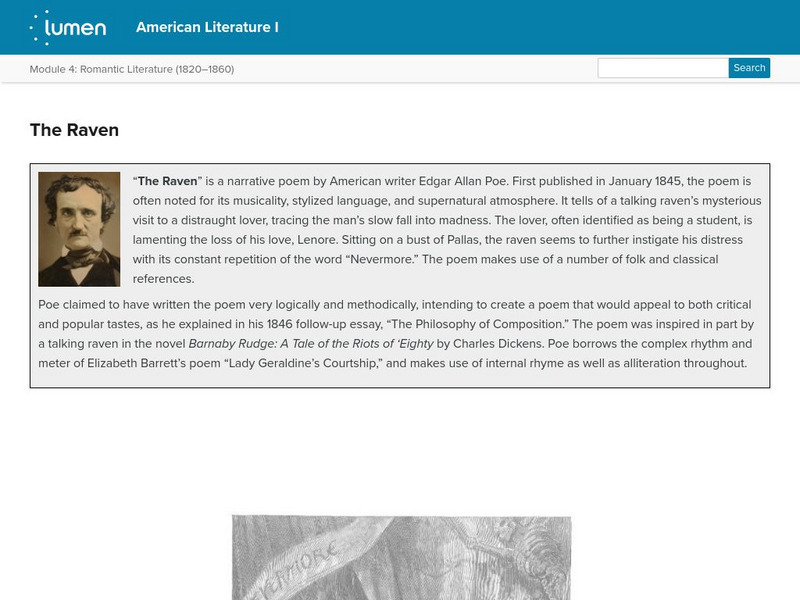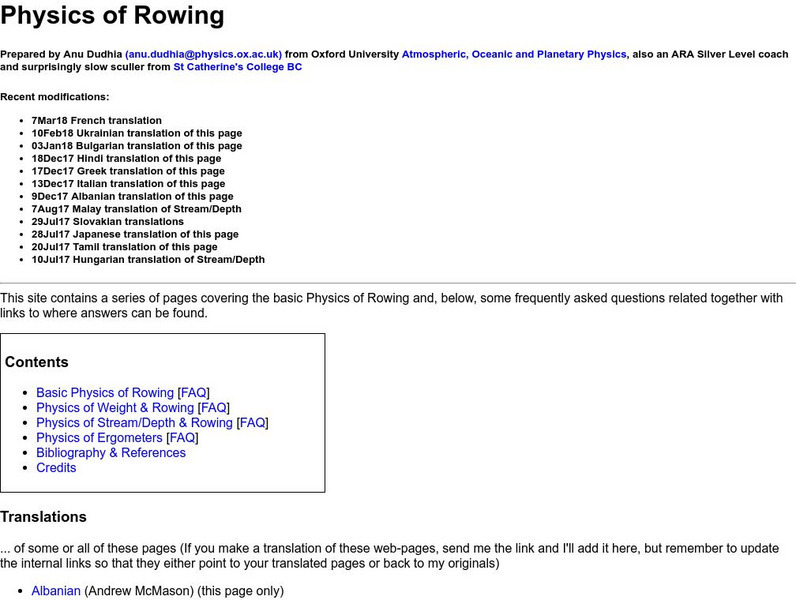Carnegie Mellon University
The Sun and Its Energy
The sun's energy is the primary source of energy for all surface phenomena and life on Earth. Combined with the material of the Earth (including the molecules held close by the Earth's gravitational force called the atmosphere), this...
eSchool Today
E School Today: Your Cool Tips on Ozone Depletion
Why is ozone important? Learn about the ozone layer in our atmosphere, how it is being depleted by human and natural events, the effects of a thinning ozone layer on humans and other living things, what is meant by the ozone hole, and...
National High Magnetic Field Laboratory
Magnet Academy: Anders Celsius
Anders Celsius is most familiar as the inventor of the temperature scale that bears his name. The Swedish astronomer, however, also is notable as the first person to make a connection between the radiant atmospheric phenomenon known as...
Smithsonian Institution
National Air and Space Museum: Exploring the Planets: Earth's Lithosphere
The plate tectonics and other features of the Earth's lithosphere are explained and illustrated. Has links to definitions of the magnetosphere, atmosphere, and hydrosphere.
CK-12 Foundation
Ck 12: Life Science: Carbon Cycle
[Free Registration/Login may be required to access all resource tools.] Carbon is one of the most common elements found in living organisms. Chains of carbon molecules form the backbones of many molecules, such as carbohydrates,...
Annenberg Foundation
Annenberg Learner: Earth and Space Science: The Geologic Timeline
Take this online quiz and test your knowledge of geological history, and the formation of our atmosphere, water, crust, oxygen, tectonic plates, Moon, and the rest of the Earth.
Lumen Learning
Lumen: American Romanticism: "The Raven" by Edgar Allan Poe
This is the text and audio of the poem "The Raven" by Edgar Allan Poe, a narrative poem first published in January 1845, and is often noted for its musicality, stylized language, and supernatural atmosphere.
University of Oxford (UK)
Oxford University: Faq: Physics of Rowing
From the Department of Atmospheric Physics at Oxford University, this page gives a scientific look at the techniques involved in the activity of rowing. Discusses the concepts of propulsion, resistance, kinetic energy, and much more...
Utah STEM Foundation
Utah Stem Action Center: Air, Natural Resources, and You
Students will analyze data from an air pollution study as well as facts about air pollution and use the data as evidence to infer the effect of using natural resources on the atmosphere and on public health.
PBS
Pbs Learning Media: Understanding Air: Climate Change and Modeling Combustion
In this lesson, students learn about the components of air and the chemical reactions that release carbon dioxide into the atmosphere and explore the connection between carbon dioxide, climate change, and environmental health.
National Weather Service
National Weather Service: Jet Stream: The Jet Stream
The concept of jet streams is explained on this site. Read about why jet stream winds blow from west to east, what the polar jet and subtropical jet are, the role that the rotation of the Earth plays, etc.
Australian Museum
Structure and Composition of the Earth
What makes the Earth unique? What are the different parts of the Earth? What is the chemical make-up of the Earth? Get the answers to these questions and more on this site from the Australian Museum Online.
University Corporation for Atmospheric Research
Ucar: Clouds Images
Photos of various types of clouds and diagrams to help you understand clouds.
Other
National Pollutant Inventory: Background Information
This site focuses on water and air pollution in Australia, with a brief mention of sea breezes.
Lawrence Berkeley National Laboratory
Berkeley Lab: University of California: Electromagnetic Radiation
This page defines electromagnetic radiation. Included are links to more information.
Ducksters
Ducksters: Earth Science for Kids: Weather: Clouds
Kids learn about clouds including how they form, levels, fun facts, and types of clouds such as cirrus, cumulus, and stratus.
Other
Niagra College Canada: The Newcomen Steam Engine
Describes the evolution of Thomas Newcomen's steam engine development. Provides several photographs and sketches of Newcomen's machines.
NOAA
Noaa: Photo Library: Lightning Photo 2
The National Oceanic and Atmospheric Administration provides a photo library of severe weather formations. Utilizing time-lapse photography, this photograph captures multiple cloud-to-ground lightning strokes during a nighttime...
NOAA
Noaa: Photo Library: Lightning Photo 4
The National Oceanic and Atmospheric Administration provides a photo library of severe weather formations. Using time-lapse photography, this image captures numerous cloud-to-ground lightning strokes during a nighttime thunderstorm in...
NOAA
Noaa: Photo Library: Lightning Photo 5
The National Oceanic and Atmospheric Administration provides a photo library of severe weather formations. Originally appearing in National Geographic Magazine, this photograph captures a lightning strike above Norman, Oklahoma.
NOAA
Noaa: Photo Library: Lightning Photo 6
The National Oceanic and Atmospheric Administration provides a photo library of severe weather formations. This photograph captures several lightning strikes during an early evening thunderstorm.
NOAA
Noaa: Photo Library: Hail Photo 1
The National Oceanic and Atmospheric Administration provides a photo library of severe weather formations. This photograph of a hailstone is measured on a ruler to indicate a diameter of 6 inches (approximately the size of a grapefruit).
Curated OER
Ncar: About Rainbows
This site from the University Corporation of Atmospheric Research provides an illustrated article about the phenomenon of rainbows.














